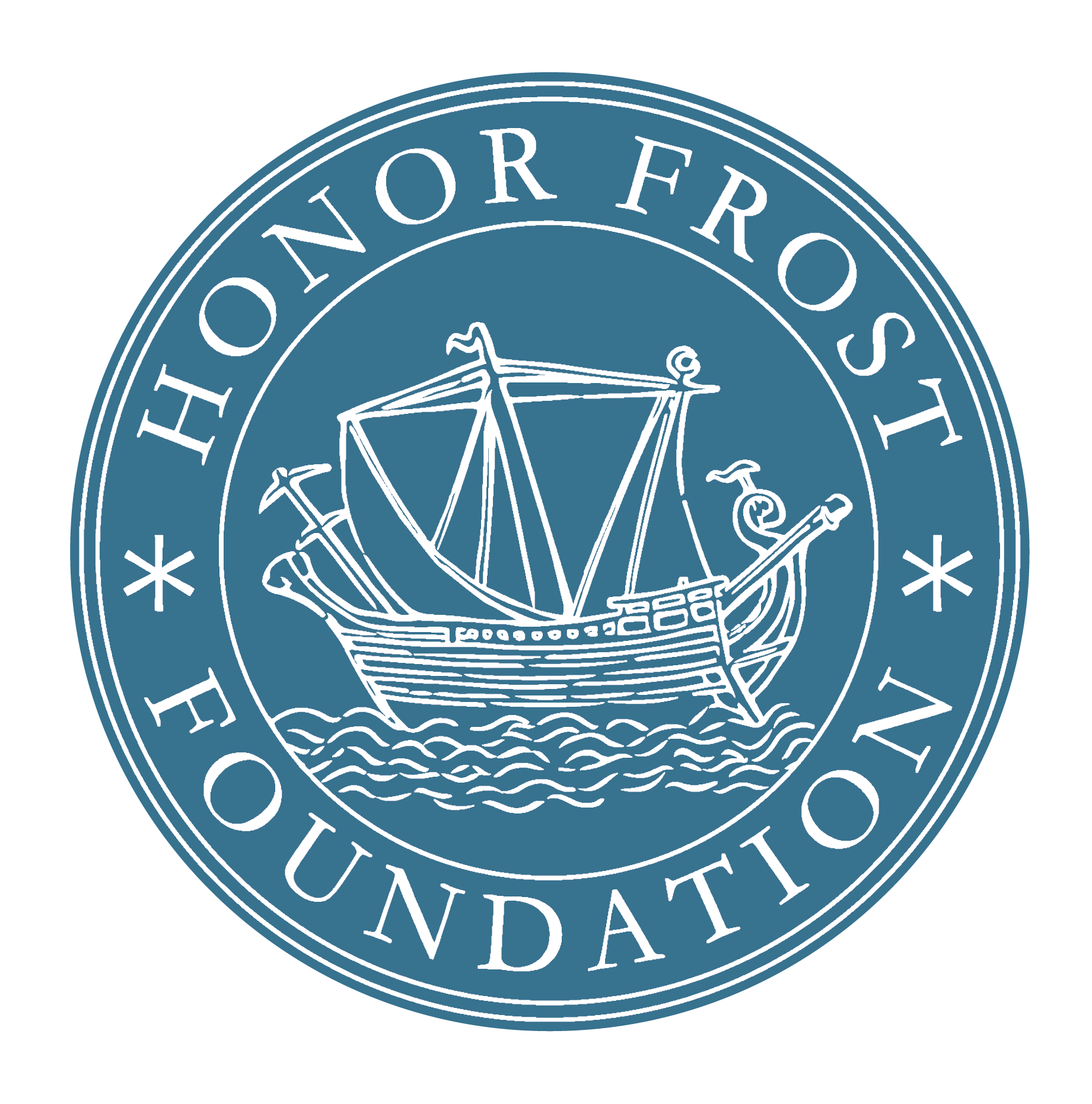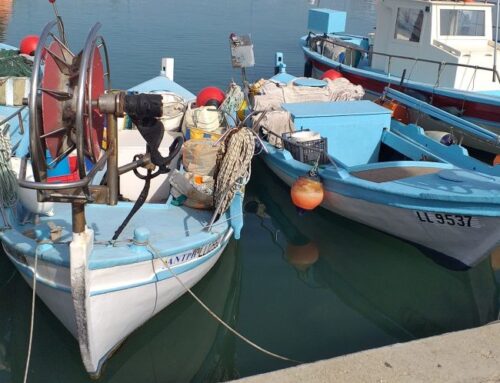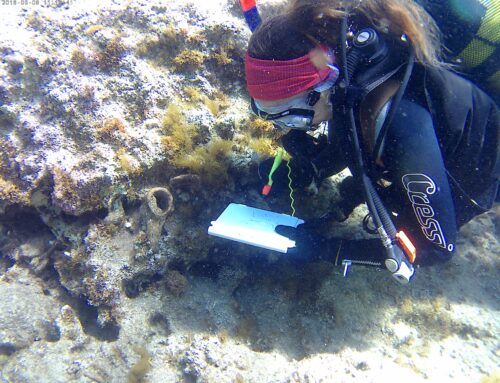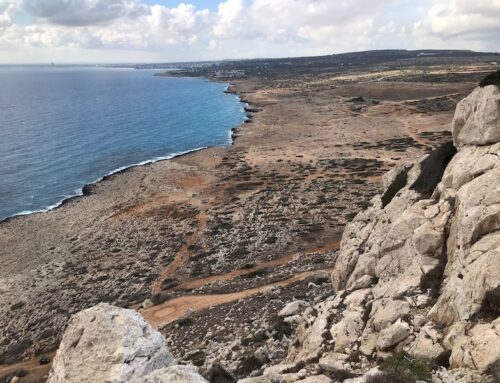Repair, Maintenance and Commissioning of the Replica Ship Kerynia-Liberty – 2017
Glafkos Cariolou and Maria Michael
In the first, seven-month phase of the project of the repair, maintenance and re-commissioning of the KERYNIA – LIBERTY (K-L), several objectives were highlighted. The results will be presented in the following report.
1. Preservation, Repair and Maintenance:
In June, the ship was sailed from Limassol Marina to a professional, traditional boatyard (“Billy’s Boatyard”) in Limassol, in order to conduct the following works:
Firstly, she was hauled-out of the water and secured on a wood-cradle. The seacocks were opened, and the paraphernalia unloaded.
The standing rigging was released and all standing and running rigging was dismantled from the mast, disassembled, labeled and measured. The mast was lifted and secured using a crane, while the sail was released from the yard and the yard was leveled and stored.











The hull was scraped and cleaned of marine growth and the old antifouling paint layers below the boot-topping level were removed by burning using hot air. The whole outside shell surface of the ship was cleaned and checked for wood–worm. All the damaged outer plank stringers (4 meters length) and parts of the damaged top of gunwale, were replaced.
Repeated efforts to inject special chemicals for fighting surface wood-worm attacks on a small number of railing-poles, the upper part of the gunwale, and a part of the transom, regrettably failed. Old traditional boat-builders suggested that in the past wooden vessels were sunk and kept submerged for two or three weeks not only for repair purposes but also for remedying or destroying eggs and remains of a particular surface-furniture-fed wood-worm. As a result, it was decided to experiment with this method in combination with efforts to answer questions as regards the actual buoyancy of our pine-constructed vessel i.e. “how many kilograms of ballast or cargo was necessary to change the buoyancy from positive and neutral to negative?” The sinking of the ship was conducted from 11th to 25th of November 2017.
On 4th of November 2017, the ship sailed from Limassol Marina to the nautical base at Mari, in order to carry out the sinking experiment. During seafaring, only the right steering oar was used, because the left one was broken. In four hours, the Kerynia ship arrived at the base. The wind speed was Beaufort 3. This was an experiment, which showed the steering capabilities and effectiveness.
On the 11th of November 2017, the sinking procedure was carried out. Initially, all the items and equipment that were in the ship were unloaded and the ship was cleaned. The yard was lowered for hull balancing. This process lasted 20 minutes and was conducted with only five people.
Then, with the use of a crane, 93 bags of crushed small rocks were placed on the ship. The average weight of each of these bags was 25kg.
The ship was also filled with water by using water pumps. The process of sinking took about three hours, but the ship did not completely sink. On the 25th of November 2017, the ship was refloated and it was washed with fresh water, in order to be cleaned from salt and a thick layer of soil. The process of refloating took about four hours.
On the 2nd of December 2017, the ship was cleaned and prepared for sailing. Some parts of the ship, which were broken, were repaired and linseed oil was used in the wooden parts of the ship. The ship returned to Limassol Marina, where she participated in the Christmas celebrations. All of this work was carried out by volunteers.
2. Honor Frost Foundation Conference of Maritime Archaeology “Under the Mediterranean”, Cyprus, 24 October 2017:
During the last day of the HFF conference 51 participants had the opportunity to sail on the replica “Kerynia – Liberty”.
Before sailing, they received a preparatory presentation on safety procedures and a description of the manoeuvres to be performed at sea.
Depending on the number of participants and available time, three trips were arranged (1st trip: 08:00-10:00, 2nd trip: 11:00-13:00 and 3rd trip: 14:00-16:00). The maximum number of visitors per trip was 20. Furthermore, some participants carried out certain sailing procedures, such as steering, changing course, and furling and unfurling of the square sail.
Traditional drinks (Commandaria wine) and snacks (almonds) believed to have been consumed on board by ancient mariners were offered to the participants.
3. Education for Pupils of Elementary Schools in Cyprus:
During 2017, the crew of the Kerynia – Liberty also offered experiential, audiovisual presentations at 27 elementary schools, in an effort to engage the interest and imagination of young students in the field of Maritime Archaeology, and present relevant issues of Cypriot history. 4776 children of 5 to 12 years old attended these presentations.
In brief, these experimental, audiovisual presentations consisted of three phases: The first phase is based on the tale of Alexander the Great and his sister Salonika, who was transformed into a mermaid by the Gods and her relationship with the ancient ship of Kerynia, a merchantman sailing at the time from the Achaean town of Kerynia to Tyre or Byblos.
The second phase encouraged the children to interact with samples of the ship’s parts (2 pieces of full size planks with 3 mortises carved on each side and 9 full size tenons, with appropriate wooden pegs, 2 full size cylindrical hollow softwood pegs, with 2 big full size “copper nails” alternatively made of soldering material instead of copper thus enabling immediate hand-bending by the presenter). Furthermore, one full size, three-part wooden pulley, block and sheave with appropriate rope was used for splicing and seizing and to demonstrate its construction, assembly and use. Full size lead-rings are also used for the sail and other ship paraphernalia. During this process, children were guided to construct an origami (Japanese paper folded art) Kerynia Ship.
Children were also able to visualize the entire process of shell first construction and square sails sailing through an audience specific power point presentation in the classroom. Thus, understanding how an ancient merchant ship was constructed and sailed in antiquity, versus modern day construction and sailing. More props are also used to excite the audience and make the presentation memorable and enticing. For example, children are fascinated when the presenter blows a triton horn-shell to demonstrate how the captain of the Kerynia Ship might alert and communicate with ancient port authorities securing a tow into port.
In the third phase, students of the three higher classes of the elementary schools, attended a power point presentation about the district and the town of Kerynia and the history behind the town and her inhabitants.
Furthermore, on the 10th of June 2017, the crew of the Kerynia – Liberty collaborated with the members of the Kerynia Youth Council and the team of the Maritime Archaeology Discovery Bus, in order to organise an event for informing the public and especially children, about maritime archaeology. The event took place at Limassol Marina.
Finally, during October and November 2017, the Kerynia – Liberty was part of the exhibition “Voyage: Greek Shipbuilding and Seafaring from antiquity to modern times”, which was organised by the Cyprus Port Authority at the old port of Limassol. The goal of the exhibition was to present to the visitors the history of Greek seafaring and shipbuilding.
4.Training Seminars for Students:
Theoretical and hands-on practical training was offered to young people in order to understand the importance of experimental archaeology for learning about ancient seafaring, shipbuilding and trade. During July, a group of young people from the Kerynia Youth Council assisted in the preparation of the new square sail (5m high x 11m wide) for the Kerynia –Liberty.




